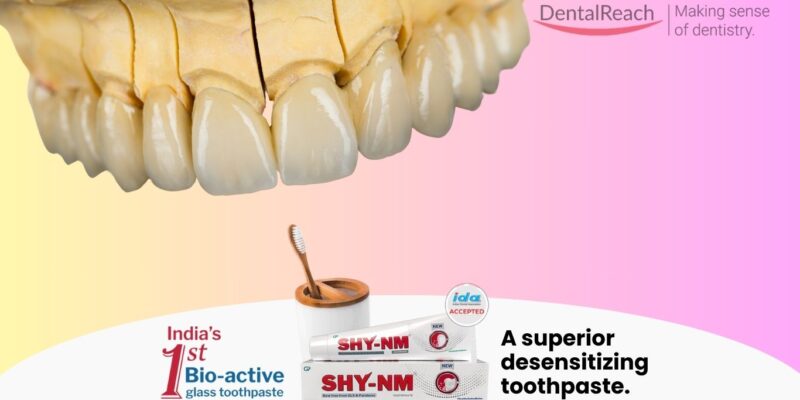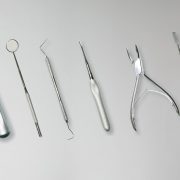Modern dental procedures have significantly improved the quality and durability of crowns and bridges. For dental practitioners, ensuring that these restorations last long and function well is crucial for patient satisfaction. Here are ten tips to help you achieve the best outcomes when placing crowns and bridges.
1. Prioritize patient assessment
Before starting any procedure, it is essential to thoroughly assess the patient’s dental condition. Proper evaluation of their oral health, including an examination of gum health, bite alignment, and underlying bone structure, can help in selecting the most appropriate material and design for the crown or bridge.
- Restoring grossly destructed teeth can be challenging. Look for a 2 mm circumferential ferrule of sound dentin as the primary factor of restorability in such cases.
- Teeth with root caries and furcation involvement rarely offer a good prognosis for crown placement – even if there is no pain post RCT.
- Placing crowns on mobile teeth, even with mild mobility does not serve the patient for long.
- Bridges with no distal abutments i.e distal cantilevers provide only short term success.
2. Choose the right material
The choice of material plays a significant role in the longevity and aesthetic outcome of crowns and bridges. Depending on the patient’s needs, options include porcelain-fused-to-metal, all-ceramic, zirconia, and metal alloys. Each material has advantages and disadvantages, and the selection should be tailored to the specific case and patient’s preferences.
- Function – in heavy occlusal cases where chips and breakages will be common, a full contour zirconia or metal is a better material than layered crowns like PFM or layered ceramic crowns.
- Esthetics – Patients with high esthetic demands should be given an all ceramic or a layered zirconia crown.
- Attachments – In cases requiring use of precision or semi precision attachments, PFM is a better material compared to ceramics
- Partial coverage crowns – All ceramic laminates or tabletops is the preferred material over zirconia shells.
3. Use precision in tooth preparation
Accurate tooth preparation is crucial for the success of crowns and bridges.
- Ensure that you achieve proper reduction and tapering of the abutment teeth to create a stable and retentive foundation.
- Avoid over-reduction, which can weaken the tooth, and under-reduction, which can compromise the fit of the crown or bridge.
- Following anatomic contours and giving a functional cusp bevel is the trick to mimicking precise tooth miniatures.
4. Pay attention to impression techniques
Taking precise impressions is fundamental for creating well-fitting crowns and bridges.
- Use high-quality impression materials and employ techniques such as two-step or mono-phase impressions to capture accurate details.
- Additionally, proper gingival displacement methods can improve the impression’s accuracy.
- Respecting setting time and isolation protocols during impression techniques an absolute must.
5. Emphasize on fit and occlusion
The fit of the crown or bridge and its occlusal adjustments are critical to ensure comfort and functionality. An ideal occlusion will prevent excessive force on the restoration and adjacent teeth.
- Understand that the fit and retention of the crown depends on the tooth preparation – not the cement.
- Check for proper seating of the restoration using X-rays.
- Make necessary adjustments to avoid high spots that can cause discomfort or damage over time. Make sure you send back these crowns to the lab for a final glaze.
- Check occlusion in static and dynamic states for a complete evaluation.
6. Ensure proper cementation
Cementation is a key step in ensuring the stability of crowns and bridges. Choose the right type of cement based on the material and clinical situation. Follow the manufacturer’s instructions meticulously and ensure the area is clean and dry before applying the cement to achieve strong adhesion.
- If the height of tooth preparation is lesser than 3 mm, use resin cement.
- Do not overfill the crown with cement. Lining only the cervical portion of the crown is enough to provide a good marginal seal in a well prepared restoration.
- Use resin cements for all ceramic restorations, not GIC.
- Vigorous removal of excess cement is strongly suggested to prevent cement associated periodontitis.
7. Focus on esthetics
Achieving a natural and esthetic appearance is vital for patient satisfaction.
- Pay close attention to color matching and contouring of the crown or bridge.
- Use 3D master guides instead of singletons classic shade guides.
- Teeth have different shades in different parts of the tooth – respect this and give shade accordingly.
- Collaboration with skilled dental technicians can help in creating restorations that blend seamlessly with the surrounding teeth. Share pictures for better shade communication.
8. Educate patients on maintenance
Patient education is essential for the longevity of dental restorations.
- Provide clear instructions on oral hygiene practices, such as brushing, flossing, and regular dental check-ups.
- Emphasize the importance of avoiding habits that can damage the crown or bridge, such as chewing on hard objects, nail biting, holding pins etc.
9. Conduct regular follow-ups
Schedule regular follow-up appointments to monitor the condition of the crowns and bridges. Early detection of any issues, such as minor chipping or cement failure, can prevent more significant problems and extend the restoration’s lifespan.
10. Keep abreast of advancements
The field of dentistry is continuously evolving with new techniques, materials, and technologies. Stay informed about the latest advancements and consider incorporating them into your practice to improve the outcomes of crown and bridge restorations.
By following these tips, dental professionals can enhance the quality and durability of crowns and bridges, ensuring prolonged functionality and patient satisfaction. Remember, the success of these restorations not only lies in the technical execution but also in patient education and continuous care.




















Comments